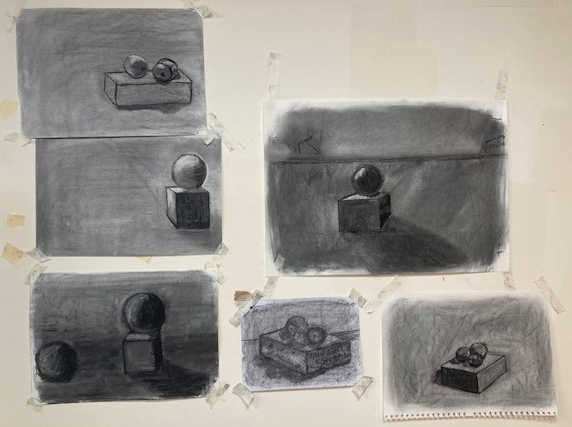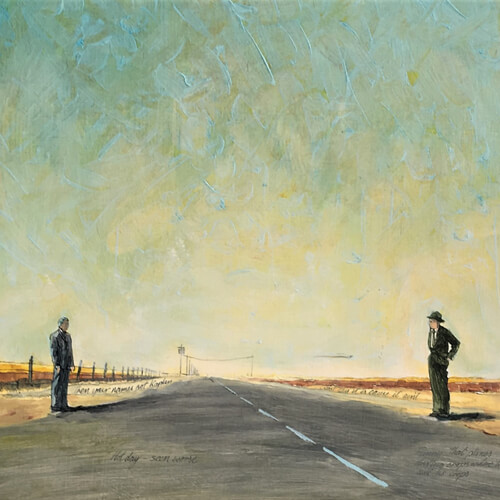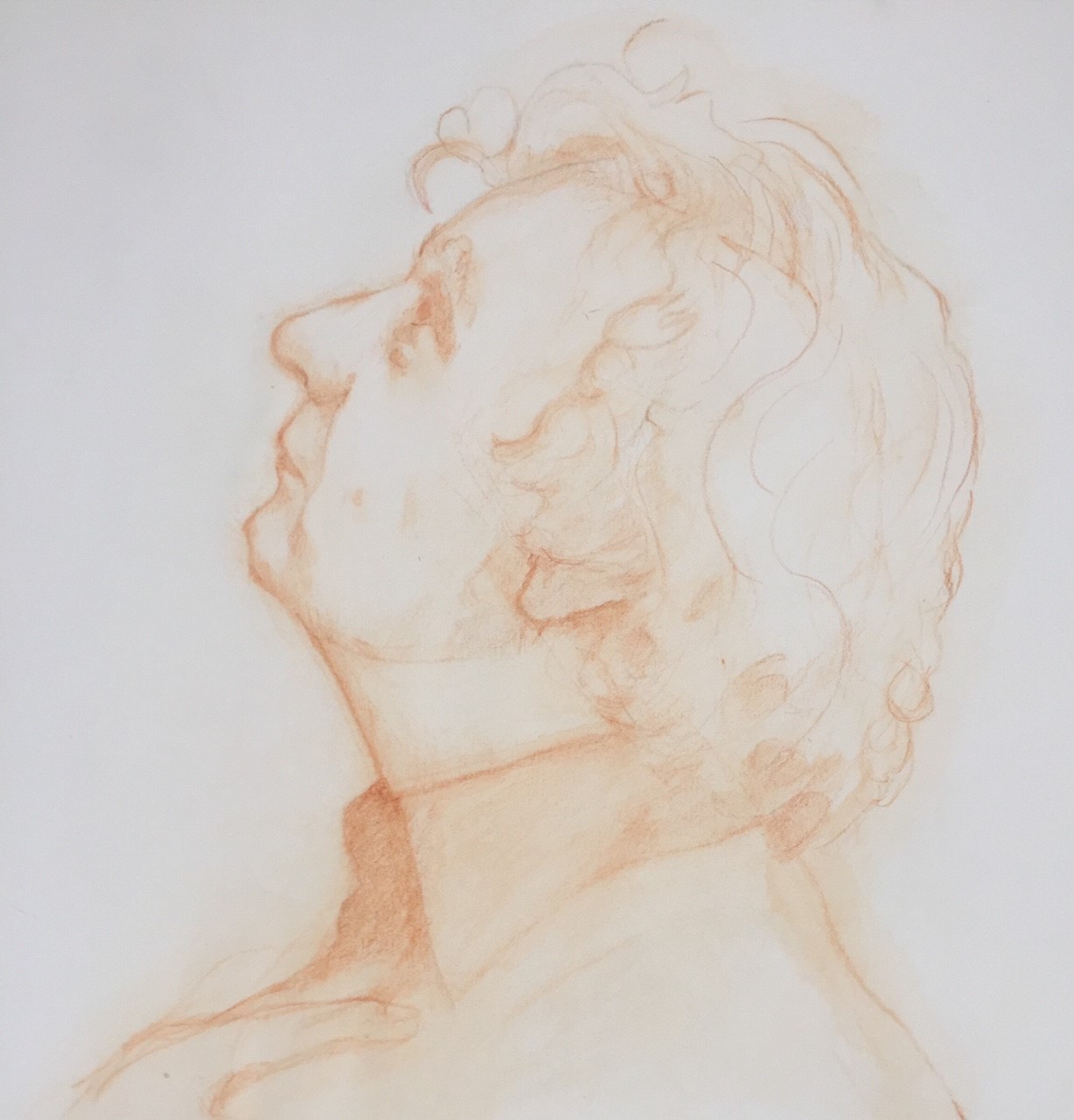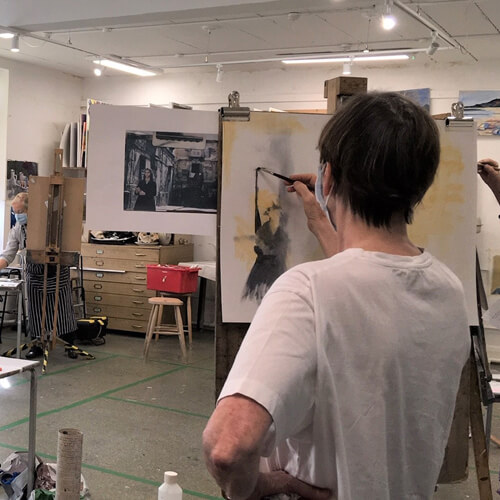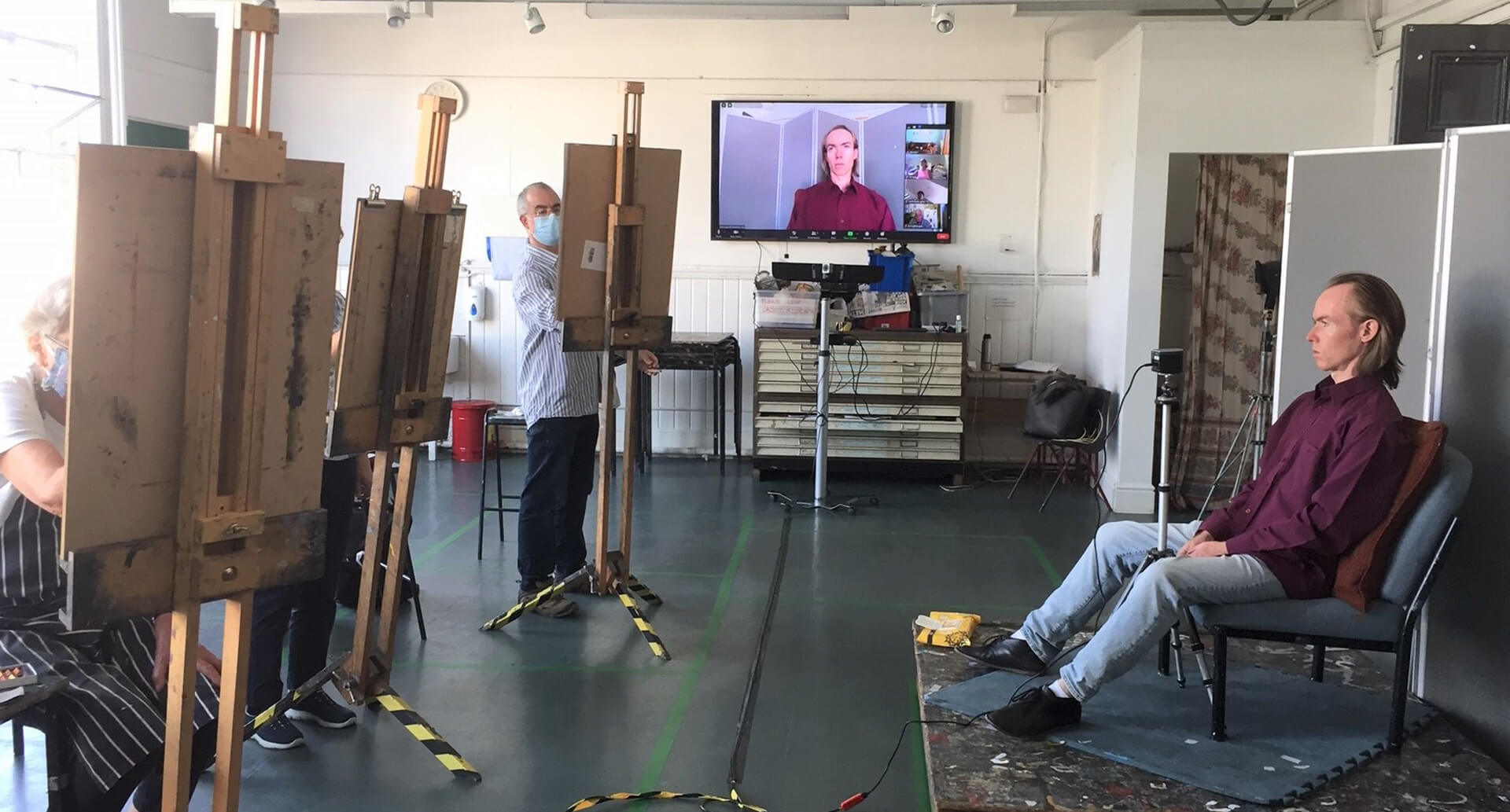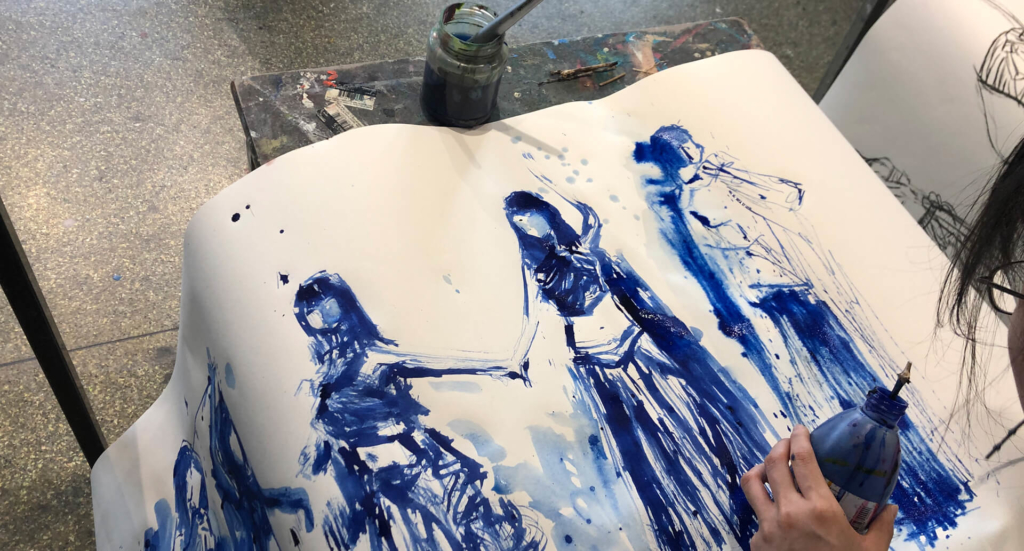Introduction to Drawing & (Oil) Painting
It is suitable for beginners and also for students with some experience who would welcome a structured refresher course. The course can be taken a term at a time or as a three term programme.
What The Course is About:
The course can be taken a term at a time or as a three term programme. 1. Autumn term: Introduction to drawing and painting (acrylics) ratio of drawing to painting 50:50. In three projects we will cover the basics of TONE, SPACE, COLOUR. Working mainly from studio set-ups. Focus on observational skills as well as familiarity with the use and potential of materials. 2. Spring term: Introduction to oil painting. Introducing the versatile medium of oils through structured exercises. From tonal to colour work, including a detailed look at mixing and paint application We will work from still life set-ups and photographs. 3. Summer term: Developing Oil painting - A chance to develop oil painting further. During the first half of the term will look at the techniques of glazing, impasto and scumbling. In the second half we will use these techniques in two longer projects.
Materials Required:
Drawing media
HB & 4B pencil (or a set of pencils) Box of willow charcoal, Stick of white chalk Sticks of black and a white conte (soft)
Masking tape or clips (to attach paper to board) Fixative or hair spray
Acrylic Paints One tube of each: White, Black *Cadmium red, Alirazim Crimson Cadmium yellow(pale), lemon yellow, Ultramarine, Cerulean blue. A flat and a round brush medium sized. If buying from PSAD shop size 6.
MATERIALS LIST: Oil painting terms 2 & 3
CORE COLOURS Titanium white, Black, Yellow ochre
lemon yellow, cadmium yellow (pale), cadmium red, Alizarin crimson, cerulean blue, ultramarine.
In addition burnt umber could be useful, as could viridian green, cobalt blue, magenta, Indian red and Naples yellow.
(If you have acrylics they will be useful for doing different background colours or under painting. Brushes Brushes nylon or bristle. Try to build up a range of sizes and types ( round, flat, and a fan brush) over the term. House painting brushes are also useful. Plus a small PALETTE KNIFE, for mixing & applying paint. Palette The palette (for mixing) can be any suitable Flat white or grey clean surface. plastic palettes or tear-off pads are particularly useful. You also use grease proof paper. Cleaning & mixing (cheaper to buy larger containers) We are not allowed to use white spirit or turps in the studio. Please use zest-it for paint thinning and cleaning. In addition you will need linseed oil which gives paint a fatter, glossier texture. You will need some small containers for these. Rags & kitchen towel Very useful for cleaning up and also for working the painting with! Painting surfaces I would suggest a pad of oil painting paper A3 or A2 or single sheets from PSAD shop. Later on stretched canvases, or primed boards.
Paper plates for mixing. An apron.
*We will start using the full range of colours from week 8
Previous Experience:
For beginners and a refresher course for students with some experience.
End of course:
What will I achieve? In addition to developing observational skills students will use a wide range of drawing media and acrylic and then oil paints. You will be encouraged to develop a practical understanding of the properties of these media. We will also look at the work of other artists through slides shows
View all courses in Drawing & Painting



